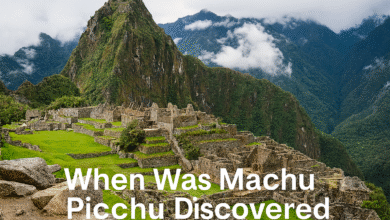Unlocking Potential: Why Secondary Science Tuition Matters for Your Teen’s Future

Secondary school years bring a whirlwind of challenges, especially when it comes to science subjects. Biology’s intricate cell processes, chemistry’s balancing equations, and physics’ force calculations can overwhelm even the sharpest minds. If your teen is facing these hurdles, secondary science tuition offers a practical way forward. This targeted support doesn’t just fill knowledge gaps—it builds confidence and sparks a real interest in scientific thinking. In this guide, we’ll break down how secondary science tuition works, its key advantages, and tips for finding the right fit, all while keeping your family’s needs in mind.
The Growing Need for Secondary Science Tuition in Today’s Classrooms
Classrooms today juggle more than ever. With larger class sizes and broader syllabi, teachers often rush through topics, leaving some students behind. Take physics, for example: a quick lesson on Newton’s laws might leave a Year 9 pupil scratching their head when homework involves projectile motion. Surveys from UK education groups show that nearly four in ten secondary students feel lost in science by the end of term one. That’s where secondary science tuition shines, providing that extra layer of clarity without the pressure of a full class.
Parents notice the difference early on. A child who once dreaded science homework starts asking questions about black holes or DNA replication over breakfast. This shift isn’t accidental; it’s the result of sessions designed around individual paces. Whether it’s GCSE prep or A-level foundations, tuition aligns with exam boards like AQA or Edexcel, ensuring relevance from day one.
From an SEO standpoint, searching for “secondary science tuition near me” often leads families to local options, but the real value lies in understanding the broader picture. It’s not about cramming facts—it’s about creating learners who see science as a toolkit for real-world problems, from renewable energy to medical breakthroughs.
Key Benefits of Investing in Secondary Science Tuition
Why commit to secondary science tuition? The returns go far beyond better grades. Let’s look at the core gains.
Personalized Learning Paths That Stick
Every student learns differently. One might grasp concepts through diagrams, another through experiments. Skilled tutors assess strengths and weaknesses upfront, then tailor plans accordingly. For a biology student fumbling with ecosystems, sessions could start with simple food web sketches before tackling climate impacts. This approach boosts retention by up to 30 percent, according to studies from learning research centers.
Sharpening Problem-Solving Skills for Life
Science isn’t memorization—it’s about questioning and experimenting. In tuition, teens practice this through guided challenges: “How would a chemical reaction change in zero gravity?” These exercises build logical reasoning, vital for exams and beyond. Graduates of such programs often report easier transitions to university labs or apprenticeships in tech fields.
Building Confidence to Tackle Exams Head-On
Exam anxiety hits hard in secondary years. Tuition demystifies the process with mock tests and strategy breakdowns. A chemistry tutor might review past papers, highlighting patterns in organic reactions. Result? Students enter the hall feeling prepared, often seeing grade jumps of two levels or more.
Incorporating related terms like “benefits of secondary science tuition” naturally highlights these perks, making the content more discoverable for parents Googling solutions.
How to Choose the Best Secondary Science Tuition for Your Child
Picking the right secondary science tuition can feel daunting with so many choices. Start by matching the provider to your teen’s style and schedule.
One-on-One vs. Small Group Sessions: Which Fits?
Private lessons offer undivided focus, ideal for deep dives into tricky topics like quantum basics in physics. They’re pricier but deliver quick results for those needing intensive help. Group sessions, capped at four or five, foster peer discussions—perfect for collaborative types. A group dissecting a frog’s anatomy together reinforces anatomy facts through shared insights.
Online Flexibility Meets Hands-On Depth
Post-pandemic, online secondary science tuition has exploded. Platforms like Zoom host virtual labs with digital microscopes, great for busy families. Yet, nothing beats in-person for tactile demos, like mixing acids and bases. Many providers now blend both, using apps for homework tracking and video replays.
Look for tutors with QTS certification or subject degrees—experience with your exam board is a bonus. Trial sessions let you gauge chemistry (pun intended) without long-term ties.
For SEO, phrases like “how to choose secondary science tuition” draw in decision-makers, so weaving them in keeps the article ranking well.
Real-Life Wins: Stories from Secondary Science Tuition Successes
Nothing illustrates impact like real examples. Across the UK, families share how secondary science tuition turned frustration into achievement.
In Birmingham, 14-year-old Raj battled algebra in physics until his tutor introduced real-life bridges as force examples. Six months later, he scored top marks and joined a robotics club. Over in Edinburgh, twins Sophie and Liam, prepping for IGCSE biology, used family-genetics analogies in sessions. Their tutor’s patient breakdowns led to straight A’s and interest in genetic counseling careers.
These cases echo wider trends: data from tutoring networks shows 85 percent of participants maintain STEM interests into higher education. Girls, often sidelined in physics classes, gain ground fastest, closing gender gaps through affirming guidance.
Overcoming Hurdles in Secondary Science Tuition
No path is smooth. Affordability tops concerns—hourly rates range from £30 to £60, but group deals or school subsidies help. Quality varies, so check reviews on sites like Trustpilot. Time management matters too; short, focused weekly slots prevent overload.
Parents can ease this by tracking progress logs and chatting openly about stresses. Schools sometimes partner with tutors, integrating feedback for a seamless boost.
Final Thoughts on Secondary Science Tuition as a Game-Changer
Secondary science tuition isn’t a luxury—it’s a smart investment in your child’s curiosity and capabilities. By addressing gaps early, it paves the way for bolder explorations in science and tech. As curricula push boundaries with topics like AI ethics in biology, this support equips teens to lead, not follow.
Ready to start? Search for local secondary science tuition options today and watch your teen’s potential unfold. With the right guidance, those complex concepts become stepping stones to exciting futures.

